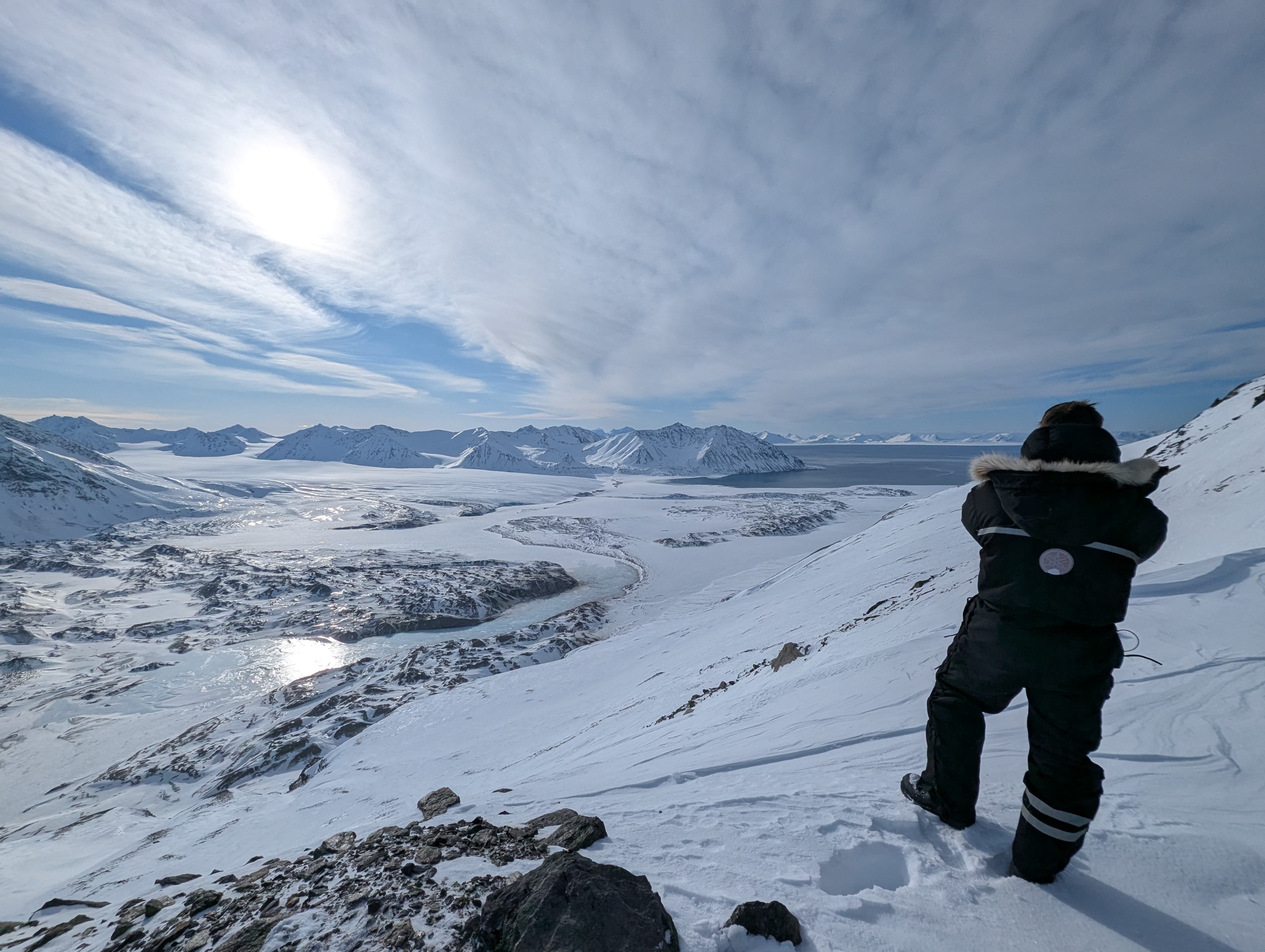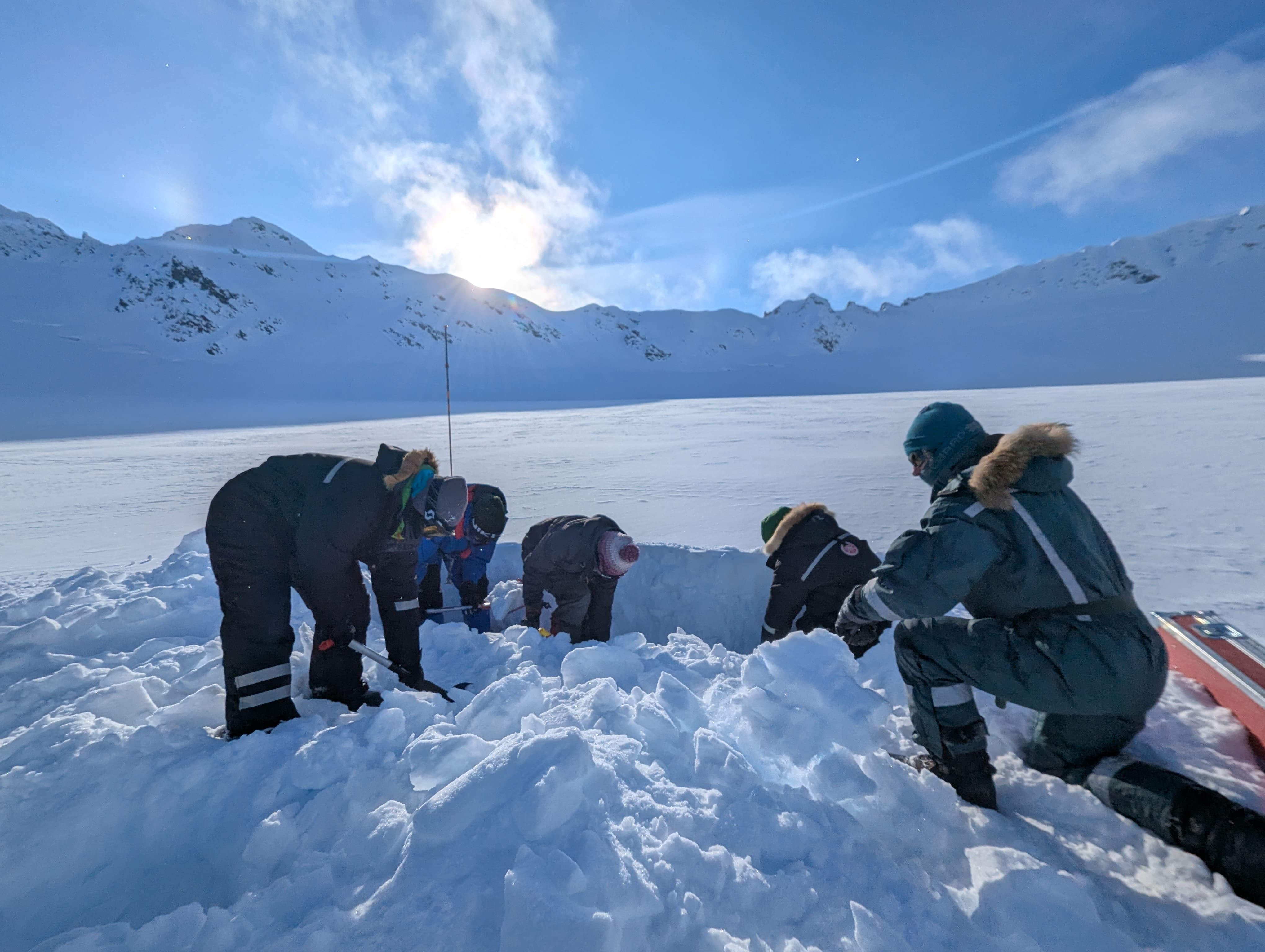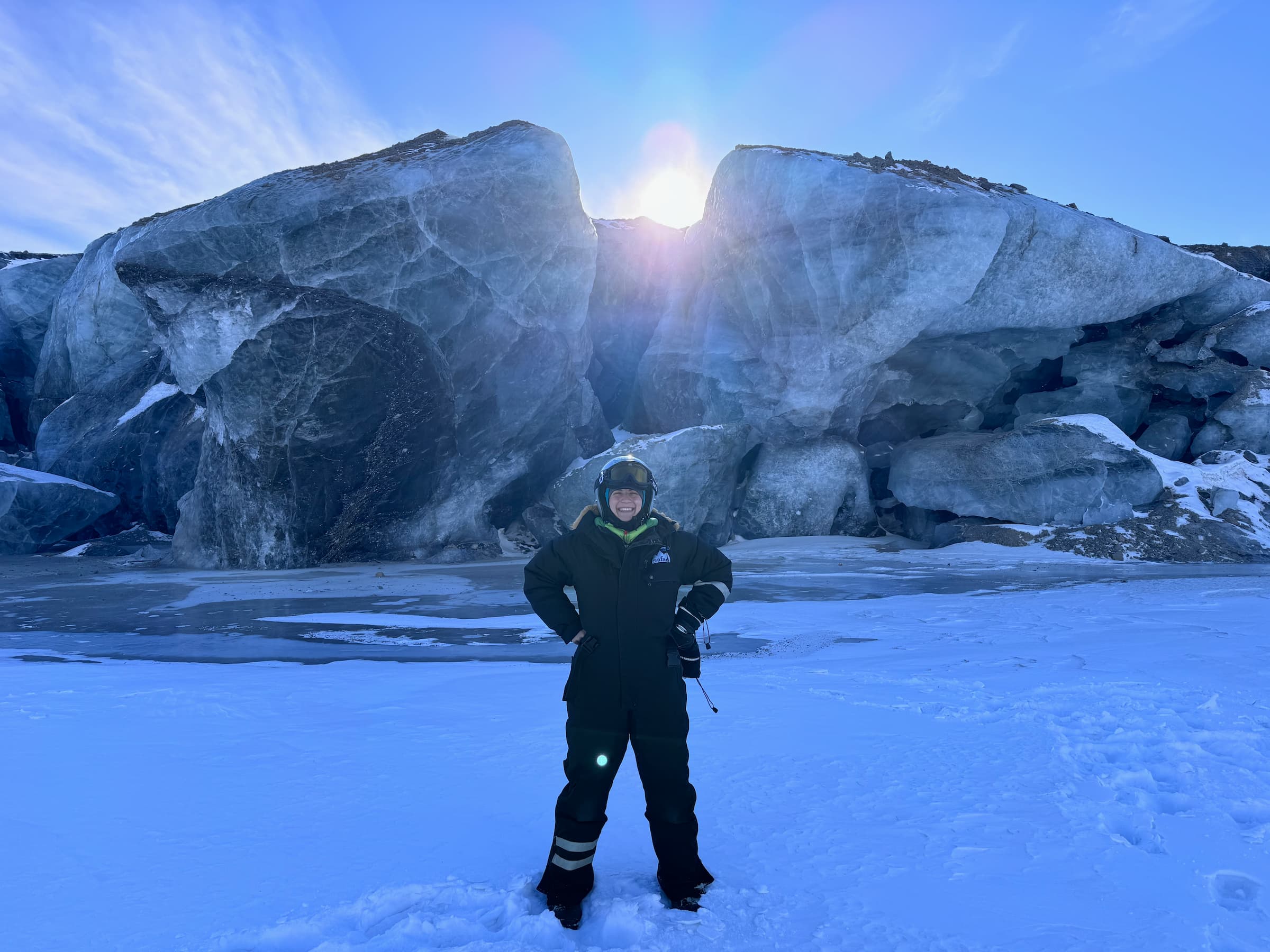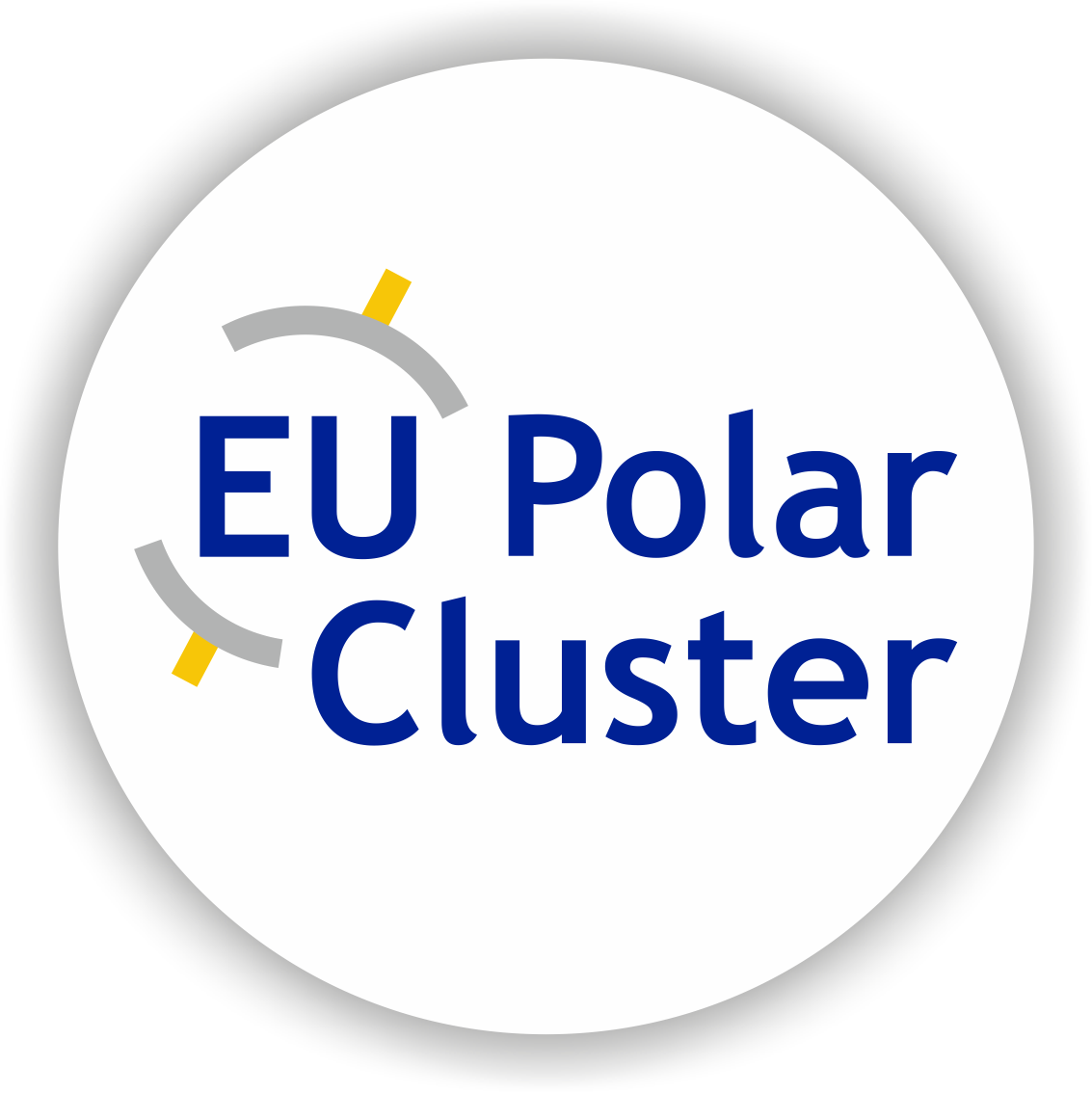Whiteouts and weather challenges
Arctic fieldwork is never without hazards, and the ICEBERG team faced their share of them. Before heading out each day, the team carefully checked the weather forecast. One of the most dramatic moments came when a sudden change in weather plunged the scientists into a whiteout.
“In just a few seconds, everything around us turned white. We couldn’t even tell where we had arrived from. It was completely disorienting,” recounts Beatrice. “That’s the Arctic: conditions can change instantly, and you have to be ready.”
Alongside the weather, the team also had to pay close attention to glacier conditions, consulting GPS routes and past surface observations to identify potential hazards like hidden crevasses. On site, they used safety probes and slings to test the area before beginning work. Despite these challenges, they successfully gathered all required samples.
The guard is always up when working in extreme environments, especially when working in these polar bear areas. For this reason, while the team is working, it is always necessary to have someone to act as a “sentry” in case a bear arrives.







